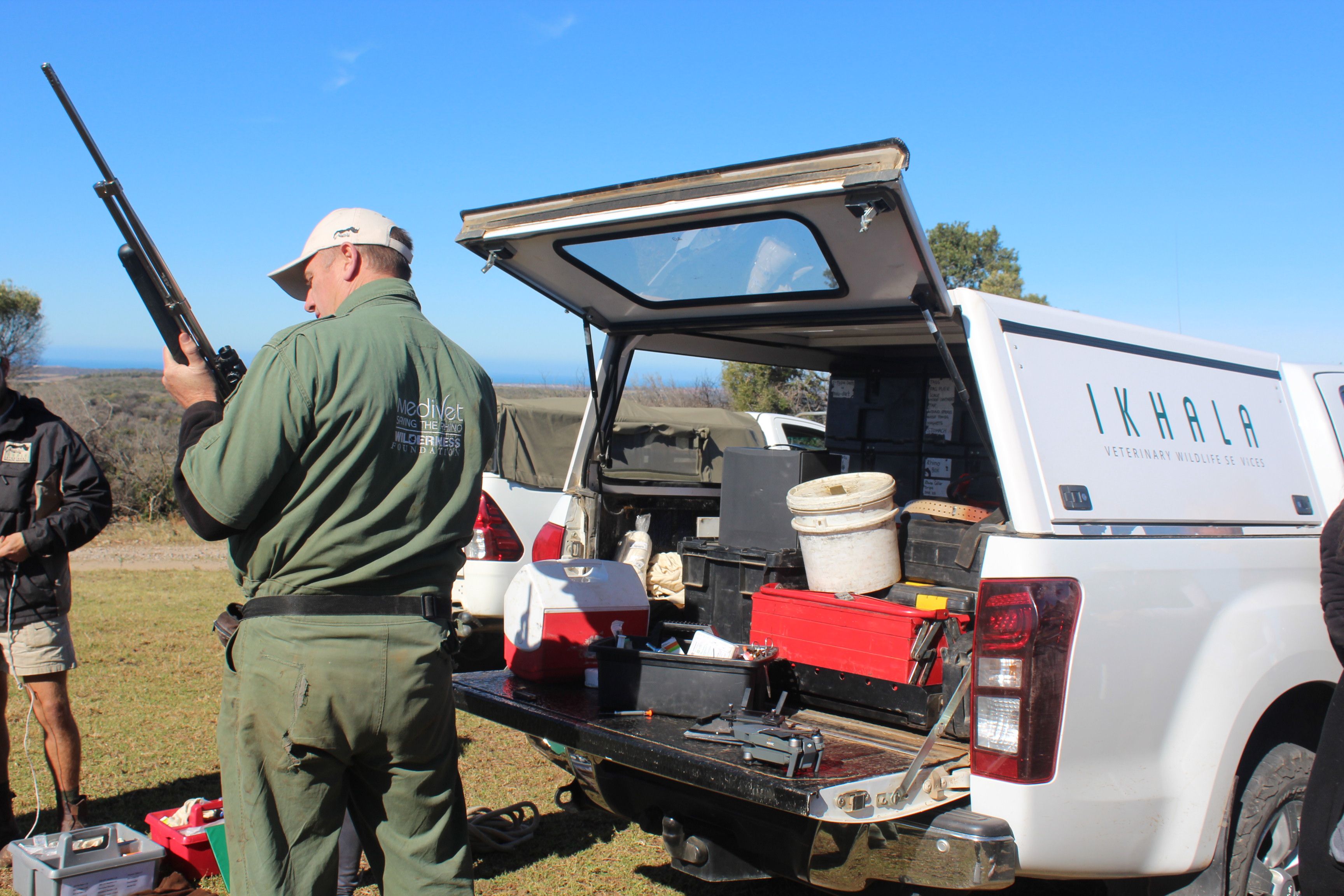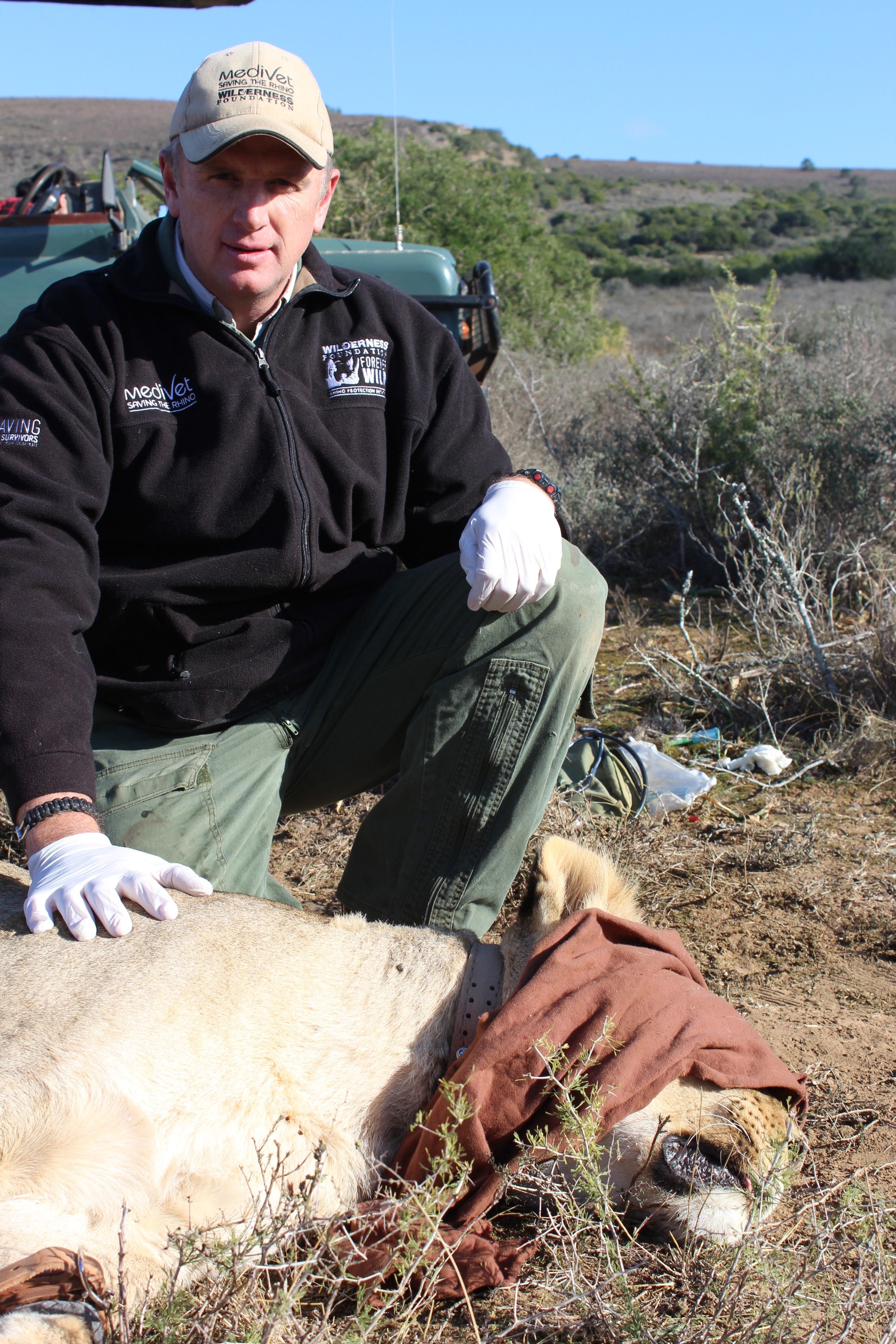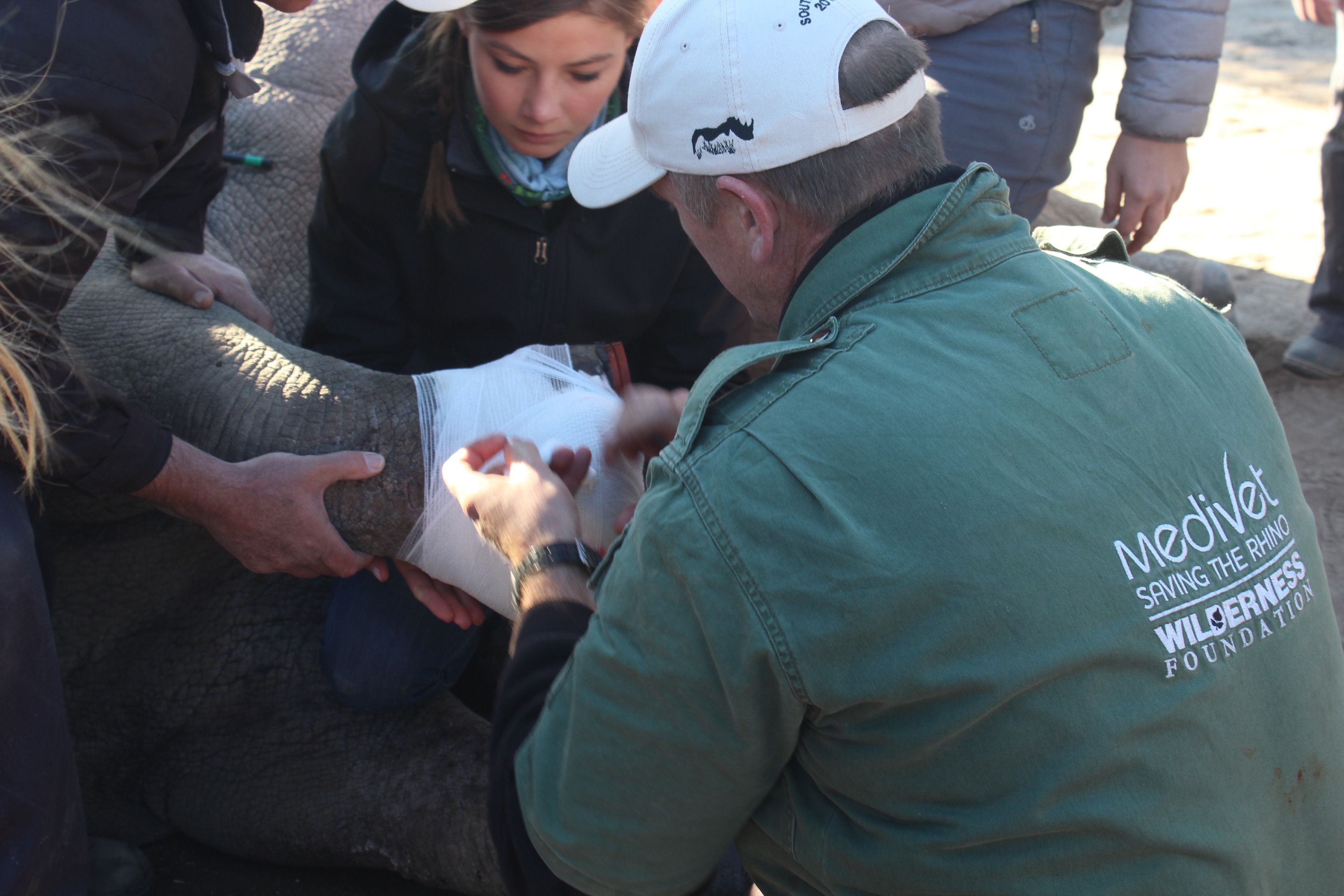Rhino conservation is no longer simply a cause, but instead a war.
At places such as Kruger National Park in South Africa, lives are being lost in the fight against the illegal wildlife trade. People from all over the country are joining anti-poaching units at Kruger with hopes of protecting the wildlife from human greed.
In other areas such as the Eastern Cape, people like wildlife vet Dr. William Fowlds are crusading against poaching through a more holistic approach, including the use of education and veterinary work. It is Fowlds’ belief that we must first address the demand for rhino horn and then work to improve environmental education to stress the importance of conservation.
Native to the Eastern Cape, Fowlds grew up on what was once domestic farmland. The wildlife had slowly begun to move away from the Eastern Cape. Fowlds continues to work on the land that had been in his family for five generations.
Fowlds had little exposure to the big five (the African lion, African elephant, Cape buffalo, African leopard, and rhinoceros) but instead to wildlife such as Kudu and other species of antelope. Fowlds didn’t see his first rhino until he was in his third year at the University of Pretoria’s veterinary school studying wildlife in 1997.
It was during a vet school symposium with 73 students from 15 different countries that Fowlds said he saw African wildlife “through the eyes of foreigners” as truly valuable for the first time.
Originally, Fowlds said he “went into vet school to be a farm vet, to be a large animal vet, not to be a wildlife vet because there was no opportunity to be a wildlife vet in this part of the country yet.” Fowlds would later change career paths.
His family’s neighbors began to pioneer the way to bring wildlife back on their property, now known as Shamwari Game Reserve, and they started an eco-tourism business in the Eastern Cape.
Not long after, in 1999, Fowlds and his family left behind domestic farming life. They decided to convert their land to a game reserve and slowly transform it into a hotspot for ecotourism and conservation.
At this time, the idea of creating a game reserve and reintroducing wildlife, such as rhinos, back to their land was viewed as laughable, Fowlds said. Ecotourism simply had yet to become an accepted ideal in the Eastern Cape, he said, and it didn’t make sense to many farmers.
Fowlds explains that during apartheid South Africa had been “an outlawed country to visit” and “the notion of wildlife utilizations, safaris, wildlife safaris is a very foreign idea to [South Africa].” Nonetheless, the Fowlds family moved forward, joining others like Shamwari in hoping to make a more sustainable future by bringing more wildlife back to their property.
Fowlds began his work as a wildlife vet and started to treat rhinos in the Eastern Cape.
In the early 2000s, he witnessed the first death of a rhino from poaching. He says he “felt completely helpless and almost disappointed" that they couldn't be saved from people’s selfish desire to make money.
Pioneering work with other vets, Fowlds learned how to properly medicate and treat rhinos—helping an injured rhino that may have hurt its foot, replacing tracking collars, checking for pregnancy, or giving shots and supplements if a rhino was found sick. He says wildlife surgical techniques weren’t clear-cut or written out at the time. Vets had to figure out anesthesia, proper injection amounts, and how to perform surgeries through studies and experimentation.
Dr. Mike Slattery, a professor at Texas Christian University, who has worked closely with Fowlds for years in the fight against poaching, considers Fowlds to be a world-renowned wildlife vet. Slattery says Fowlds is “immensely respected” and that his “vision to build a rhino sanctuary in the Eastern Cape will be his legacy.”
In the 10 days that I spent with him, Fowlds did procedures on a waterbuck, cape buffalo, red hartebeest, several rhinos, and a lion.
To bridge the gap between communities and conservation, Fowlds, with the help of others, works to improve environmental education for local schools and employs people from nearby communities on his family reserve. He has been featured in a popular TV series “Safari Vet School” as well as a BBC documentary “Operation Wild.” He has partnered with MediVet UK and Saving the Survivors to further his wildlife veterinary work and his fight to keep rhinos from extinction.
“It’s a labor of love,” he says. “If we can’t save the rhinos, we can’t save anything.”


